TRIGONOMETRY REFRESHER
A. Albert Klaf
DOVER PUBLICATIONS, INC.
Mineola, New York
Copyright Copyright 1946 by A. Albert Klaf All rights reserved.
Bibliographical Note This Dover edition, first published in 2005, is a reprint of the 1956 Dover unabridged republication of
Trigonometry Refresher for Technical Men, originally published by the McGraw-Hill Book Company, Inc., New York, in 1946.
Library of Congress Cataloging-in-Publication Data Klaf, A. [Trigonometry refresher for technical men] Trigonometry refresher / A. [Trigonometry refresher for technical men] Trigonometry refresher / A.
Albert Klaf. p. cm. Originally published: Trigonometry refresher for technical men. 1st ed. New York: McGraw-Hill, 1946.
Includes index. ISBN-13: 978-048644227-3 (pbk.) ISBN-10: 048644227-6 (pbk.) 1. Trigonometry. I. Title. QA531 .K53 2005 516.24dc22 2004059345 Manufactured in the United States by Courier Corporation
44227603
www.doverpublications.com
PREFACE

We stand at the threshold of a greater technological era.
It is safe to say that a knowledge of trigonometry is and will be more useful to the technical man than any other branch of mathematics. Mechanical, electrical, and terrestrial forces act in various related positions. Airplanes, ships, projectiles, and planets move in directions that form certain angles with other objects or planes of reference. Practically every technical field abounds in problems where a knowledge of trigonometry is essential. The aim of this book is to present the subject of plane and spherical trigonometry in such a manner that all who desire rapid comprehension in this useful field will find their work materially facilitated. This text follows the method effectively employed in the authors Calculus Refresher for Technical Men.
The modem question-and-answer form used in both books has been found to give at once a precise and concise way of presenting the subject. It offers the twofold advantage of easy understanding and ready application, essentials for progress in any field. In this book the term refresher is used in the title only because of the manner of treatment and not because of the omission of proofs or other pertinent material. Appendix). The methods of periodic functions, identities, inverse functions, and trigonometric equations are explained in minute detail and illustrated by numerous examples solved in the text. The important subject of logarithms is developed from the beginning in progressive steps.
The student need not be puzzled when asked to find the value of  18 or to solve (0.004739)0.016. The chapter entitled Significant FiguresAccuracy in Computations should contribute much toward the saving of time in numerical calculations. The theory, construction, and use of the straight slide rule receive more prominence here than in probably any other book of this type. The application of the slide rule in the solving and checking of triangles is duly emphasized. The solution of right and oblique triangles by the use of logarithms completes this section. consists exclusively of applications of plane trigonometry.
18 or to solve (0.004739)0.016. The chapter entitled Significant FiguresAccuracy in Computations should contribute much toward the saving of time in numerical calculations. The theory, construction, and use of the straight slide rule receive more prominence here than in probably any other book of this type. The application of the slide rule in the solving and checking of triangles is duly emphasized. The solution of right and oblique triangles by the use of logarithms completes this section. consists exclusively of applications of plane trigonometry.
Among the important problems here presented are those dealing with small angles, periodic functions, vectors and vector quantities, surveying, aerial and sea navigation, belts, helixes, light, and hydraulics. A complete chapter is devoted to polar coordinates, complex numbers, De Moivres theorem, and trigonometric series. consists of a comparatively extensive introductory chapter that is in the nature of a review of spherical geometry. This is followed by a chapter on spherical triangles. The final chapter stresses the application of spherical trigonometry in the solution of the terrestrial and the astronomical triangles. Throughout the book many illustrations serve to elucidate the text.
Numerous problems to test the students progress follow each chapter. Answers to odd-numbered problems are given beginning on page 571. The subject of trigonometry has been comprehensively covered in this book, which should prove useful to those who wish to study the subject for the first time with rapidity, to those who wish to apply trigonometry to various technological fields, and to those who desire to refresh their previous acquaintance with its intricacies. The author takes this opportunity to express his gratitude to William I. Powell, mechanical engineer, Board of Water Supply, City of New York, for having checked the entire manuscript and for several helpful suggestions. He is particularly grateful to his wife, Mollie G.
Klaf, and his son Franklin, for their appreciable aid in the mechanics of the manuscript and in the checking of proofs. A. A LBERT K LAF . N EW Y ORK , N. Y., March, 1946.
CONTENTS

SECTION I
PLANE TRIGONOMETRY
INTRODUCTION
 1.
1.
What does the word trigonometry mean? The word trigonometry is derived from two Greek words, trigonon, triangle, and metria, measure. 2. With what does trigonometry deal? Trigonometry deals with triangles and other investigations involving angles. 3. How does trigonometry differ from geometry? Geometry indicates relationships, and trigonometry supplies exact formulas for the solutions of lengths of lines. 4. 4.
For whom is trigonometry especially important? Trigonometry is especially important for the navigator, astronomer, physicist, engineer, and technical man. 5. What is analytical trigonometry? Trigonometry that deals with proof and use of algebraic relations among the trigonometric functions (relationships) of the same or related angles is called analytical trigonometry.
C HAPTER I
ANGLES AND THEIR MEASUREMENT
6. What is an angle? Whenever two lines intersect at a point, the opening between the lines is called an
angle.
7. 7.
What is the usual symbol for an angle? The symbol in front of a designation means angle. 8. How are angles usually designated? Angles are usually designated a. by three letters with the middle letter always at the point of intersection, as ABC or CBA.  Q UES . b. by a letter between the two lines of the angle. c. by a letter between the two lines and an arrow between the lines to indicate the direction in which the angle is measured. 9. 9.
Q UES . b. by a letter between the two lines of the angle. c. by a letter between the two lines and an arrow between the lines to indicate the direction in which the angle is measured. 9. 9.
What are the parts of an angle? An angle may be considered to have an initial line, a terminal line, and a vertex. B = vertex, BC = initial line, and BA = terminal line. 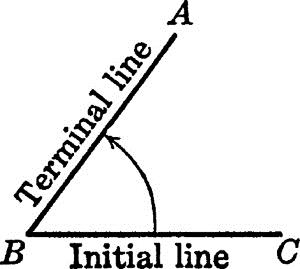 Q UES . 9. 10. degrees, minutes, and seconds. = degrees, = minutes, = seconds. b. radians. c. mils. 11. 11.
Q UES . 9. 10. degrees, minutes, and seconds. = degrees, = minutes, = seconds. b. radians. c. mils. 11. 11.
What is meant by an angle of 1 degree? If the circumference of a circle is divided into 360 equal parts and lines are drawn from the center of the circle to the points of division, 360 separate small angles will be formed each of which is called an

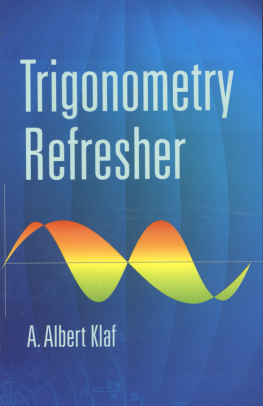


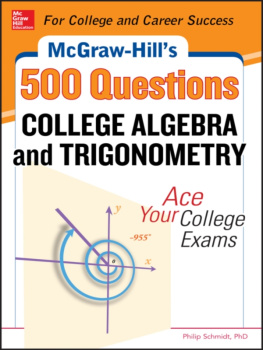
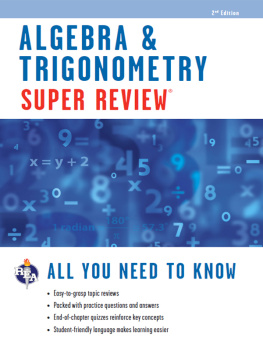


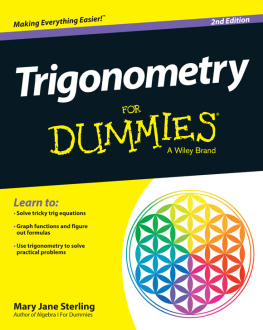

 We stand at the threshold of a greater technological era.
We stand at the threshold of a greater technological era.  18 or to solve (0.004739)0.016. The chapter entitled Significant FiguresAccuracy in Computations should contribute much toward the saving of time in numerical calculations. The theory, construction, and use of the straight slide rule receive more prominence here than in probably any other book of this type. The application of the slide rule in the solving and checking of triangles is duly emphasized. The solution of right and oblique triangles by the use of logarithms completes this section. consists exclusively of applications of plane trigonometry.
18 or to solve (0.004739)0.016. The chapter entitled Significant FiguresAccuracy in Computations should contribute much toward the saving of time in numerical calculations. The theory, construction, and use of the straight slide rule receive more prominence here than in probably any other book of this type. The application of the slide rule in the solving and checking of triangles is duly emphasized. The solution of right and oblique triangles by the use of logarithms completes this section. consists exclusively of applications of plane trigonometry. Q UES . b. by a letter between the two lines of the angle. c. by a letter between the two lines and an arrow between the lines to indicate the direction in which the angle is measured. 9. 9.
Q UES . b. by a letter between the two lines of the angle. c. by a letter between the two lines and an arrow between the lines to indicate the direction in which the angle is measured. 9. 9. Q UES . 9. 10. degrees, minutes, and seconds. = degrees, = minutes, = seconds. b. radians. c. mils. 11. 11.
Q UES . 9. 10. degrees, minutes, and seconds. = degrees, = minutes, = seconds. b. radians. c. mils. 11. 11.